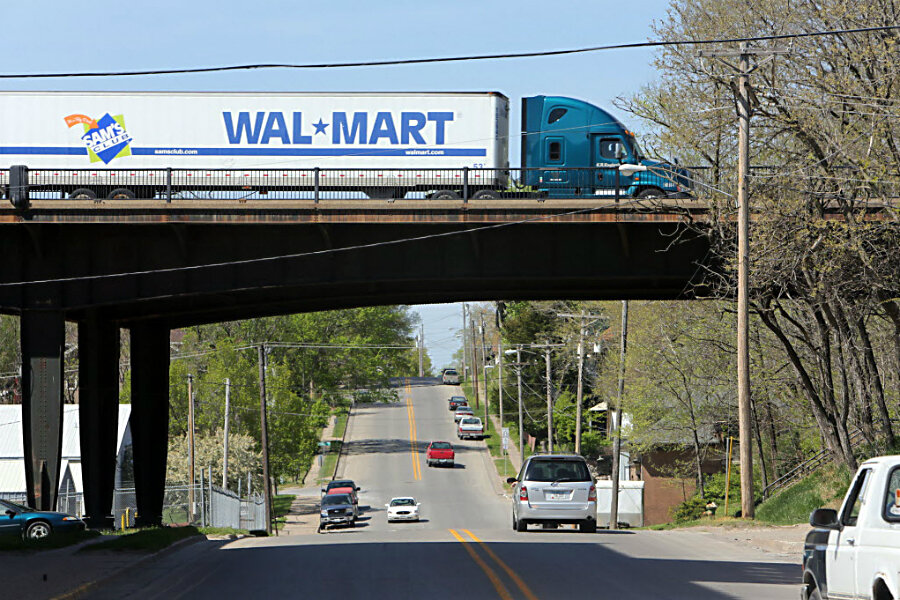How self-healing concrete could fortify America’s crumbling roads
Loading...
| WASHINGTON
As Congress navigates another last-minute scramble to approve funding for the nation’s highways ahead of a July 31 deadline, engineers far-removed from the Capitol Hill gridlock are hard at work improving the stuff that sustains our nation’s roads and bridges: concrete.
Recent innovations point to stronger and higher-performing highways and bridges in the future. Some products are already on the market; others are a long way off.
It may sound far-fetched, but the technology exists for self-healing concrete. The auto-mending material contains limestone-producing bacteria that activates when wet. The bacteria can lie dormant for up to 200 years, according to the European Patent Office, where the technology is registered.
When a structure made of self-healing concrete develops a crack, water inevitably seeps in, prompting the bacteria to feed on calcium lactate in the concrete. The feeding process breaks down different minerals in the concrete and consumes oxygen from the air. This sets in place a process that converts the calcium lactate, which can be dissolved in water, to limestone, which fills the crack.
“This is kind of ‘The Jetsons’ stuff,” says Georgene Geary, with a laugh. Ms. Geary is principal engineer at GGfGA Engineering in Georgia, and chairs the Task Force on Nanotechnology-Based Concrete Materials at the Transportation Research Board in Washington.
“This is the future,” she says.
Hendrik Jonker, a microbiologist in the Netherlands who owns the patent to the technology, came up with the idea by considering how the human body repairs broken bones through mineral processes. The process for concrete works on a crack of any length, as long as it is no wider than 0.03 inches, according to the European Patent Office.
New technology also opens the door for self-cleaning concrete. Engineers such as Kimberly Kurtis, professor at the Georgia Institute of Technology in Atlanta, are studying ways to use light as a catalyst for cleaning the surface of concrete or binding pollutants in the surrounding air.
Ms. Kurtis’ team has examined the use of a special form of the mineral titanium dioxide, which has been manipulated to make the mineral react to light. When light hits the surface of a concrete structure containing this special type of titanium dioxide, it begins a chain of events that eventually destroys organic material on the surface of the concrete, such as bacteria. Moss and fungi that feed on bacteria are unable to grow without the food source.
“They can also interact with pollutants in the air – things like nitrogen oxides or volatile organic compounds – and bind those to surfaces to essentially clean the air,” Kurtis says.
Kurtis noted that the high cost of self-cleaning concretes make them best suited for smaller scale projects in particularly dirty environments, such as a section of wall facing a street with heavy pollution.
While self-cleaning concrete has been commercially available for the past decade, its use remains limited. Sculptures near the new Interstate 35 bridge across the Mississippi River in Minneapolis – built after the 2007 collapse of an earlier bridge – use self-cleaning concrete, as does the Jubilee Church in Rome, a building celebrated for its stunning white walls and unique architecture.
If special concretes can kill bacteria, could they also purify water? Researchers at the University of Central Florida are working to develop a cleansing coating for concrete surfaces that will kill bacteria. According to Boo Hyun Nam, assistant professor of civil, environmental, and construction engineering, the idea is to cover the inside walls of pipelines and storage tanks with the coating to purify the water inside and prevent contamination. Mr. Nam would not specify what the coating is made of.
“It’s their secret recipe,” he says.







